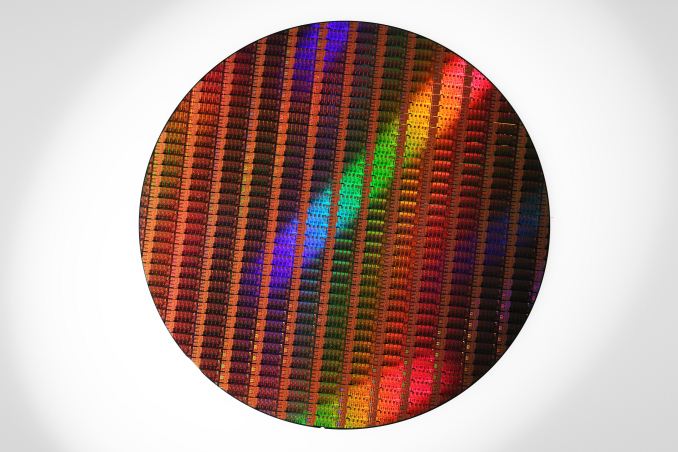The Haswell Review: Intel Core i7-4770K & i5-4670K Tested
by Anand Lal Shimpi on June 1, 2013 10:00 AM ESTFinal Words
I’m a fan of Haswell, even on the desktop. The performance gains over Ivy Bridge depend on workload, but in general you’re looking at low single digits to just under 20%. We saw great behavior in many of our FP heavy benchmarks as well as our Visual Studio compile test. If you’re upgrading from Sandy Bridge you can expect to see an average improvement just under 20%, while coming from an even older platform like Nehalem will yield closer to a 40% increase in performance at the same clocks. As always, annual upgrades are tough to justify although Haswell may be able to accomplish that in mobile.
Even on the desktop, idle power reductions are apparent both at the CPU level and at the platform level. Intel focused on reducing CPU power, and it seems like Intel's motherboard partners did the same as well. Under load Haswell can draw more power than Ivy Bridge but it typically makes up for it with better performance.
Overclockers may be disappointed at the fact that Haswell is really no more of an overclocker (on air) compared to Ivy Bridge. Given the more mobile focused nature of design, and an increased focus on eliminating wasted power, I don’t know that we’ll ever see a return to the heyday of overclocking.
If the fact that you can’t easily get tons of additional frequency headroom at marginal increase to CPU voltage is the only real downside to the platform, then I’d consider Haswell a success on the desktop. You get more performance and a better platform at roughly the same prices as Ivy Bridge a year ago. It’s not enough to convince folks who just bought a PC over the past year or two to upgrade again, but if you are upgrading from even a 3 year old machine the performance gains will be significant.











210 Comments
View All Comments
bji - Monday, June 3, 2013 - link
+10 false dichotomy. Look it up.kenjiwing - Saturday, June 1, 2013 - link
Any reviews comparing this gen to a 980x??Ryan Smith - Saturday, June 1, 2013 - link
It's available in Bench.http://www.anandtech.com/bench/Product/836?vs=142
owikh84 - Saturday, June 1, 2013 - link
4560K??? Not 4770K & 4670K?karasaj - Saturday, June 1, 2013 - link
4670K is the Haswell equivalent of a 3570K.hellcats - Saturday, June 1, 2013 - link
I read with some concern that the TSX instructions aren't going to be available on all SKUs. This is the main thing that I've been looking forward to on Haswell! Not providing the capability across the family is reminiscent of the 486SX/DX debacle. TSX could be huge for game physics as it would allow for far more consistent scaling. I know it is supposed to be backwards compatible, but what's the point of coding to it if it isn't always there?zanon - Saturday, June 1, 2013 - link
Agreed, TSX is one of the most interesting parts of Haswell so I'm sorry not to see it get more discussion. And as you say (and like with VT-d or other tech) I think Intel is being stupid and self-defeating by trying to make it an artificial differentiator. Unlike general basics of a chip such as clock rate, cache, hyperthreading or raw execution resources these sorts of features are only as valuable as the software that's coded for them, and nothing kills adoption amongst developers like "well maybe it'll be there but maybe not." If they can't depend on it, then it's not worth spending much extra time with and tremendously limits what it can be used for. That principal shows up over and over, it's why consoles can typically hold their own for so long. Even though on paper they get creamed, in reality developers are actually able to aim for 100% usage of all resources because there will never be any question about what is available.For features like this Intel should aim for as broad adoption as possible, or what's the point? They can differentiate just fine with pure performance, power, and physical properties. Disappointing as always.
penguin42 - Saturday, June 1, 2013 - link
Agreed! I'd also be interested in seeing performance comparisons with a transactionally optimised piece of code.Johnmcl7 - Saturday, June 1, 2013 - link
Definitely, I was a bit puzzled reading the review to find barely a mention of TSX when I thought it was meant to be one of the ground breaking new features on Haswell. Even if there was only a synthetic benchmark for now it would be extremely interesting to see if it works anything like as well as promised.John
bji - Sunday, June 2, 2013 - link
TSX is so esoteric in its applicability that I think you'd be very hard pressed to a) find a benchmark that could actually exercise it in a meaningful way and b) have any expectation that this benchmark would translate into any actual perceived performance gain in any application run by 99.999% of users.In other words - TSX is only going to help performance in some very rare and obscure types of software that "normal" users will never even come close to using, let alone caring about the performance of.
However I am intruiged by your speculation that TSX will be beneficial for physics simulation, which I guess could translate to perceivable performance increases for software that end users might actually use in the form of game physics. I found a paper that described techniques for using transactional memory to improve performance for physics simulation but it only found a 27% performance increase, which is not exactly earth shattering (I wouldn't call it "huge for game physics" personally).